ZOO3001 Phylum Platyhelminthes
1/96
There's no tags or description
Looks like no tags are added yet.
Name | Mastery | Learn | Test | Matching | Spaced |
|---|
No study sessions yet.
97 Terms
Animals belonging in superphylum Lophotrochozoa have what kind of embryological development?
they are triploblastic (have three germ layers)
Lophotrochozoans possess what kind of symmetry?
bilateral symmetry; meaning that a longitudinal section will divide them into right and left sides that are superficially symmetrical.
Because of possessing bilateral symmetry, what does this show for lophotrochozoans?
the beginning of cephalization; a concentration of nervous tissues and sensory organs in the head of an organism
Are lophotrochozoans deutero or protostomes?
they are protostomes, where the blastopore/point of invagination of ectoderm(outer germ layer) becomes the mouth opening into the alimentary canal/
Are protostomes acoelomate, pseudocoelomate, eucoelomates?
they are acoelomate, pseudocoelomate, and eucoelomates
what is a coelom?
a cavity that seperates ectoderm and endoderm layers, allowing for the development of complex organs and systems.
what is an acoelomate?
An organism that lacks a coelom, having solid tissue filled with mesoderm, typical of flatworms.
what is a pseudocoelomate in a locotrophozoan?
An organism with a cavity or pseudocoelom that replaces the blastocoel (the cavity within the blastula), but it is only lined by mesoderm on the outside of the cavity, leaving the gut tube and organs unlined
what is a eucoelomate?
An organism with a true coelom that is fully lined by mesoderm, allowing for the development of complex internal organs.
what is the feeding apparatus that most organisms in lophotrochozoa possess?
a lophophore, a feeding structure composed of a set of ciliated tentacles surrounding the mouth.

what are the larvae that most lophotrochozoans possess?
a trochophore larvae; a free-swimming larva characterized by two bands of cilia surrounding a top like body.
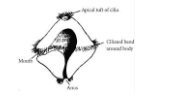
what kind of organism is a flatworm (coelomate wise)?
an acoelomate; including free living and parasitic forms
what are the names of the parasitic forms of phylum platyhelminthes?
trematodes, cestodes/tapeworms
what is the developmental phenomena called blastomere anarchy?
a temporary feeding larva forms, followed by a regrouping of cells within the embryo that gives rise to a second stage embryo
the flatworms we discussed to what phylum?
rhabditophora
what is a defining characteristic of rhabditophora
posession of rhabdites; rodlike structures discharged in mucus. they serve in both defense and traction for ciliary gliding among substrate
the three embryonic tissue layers give rise to what in flatworms? where do they come from developmentally?
epidermal tissues; ectoderm
lining of digestive system; endoderm
internal tissues; mesoderm
mesodermal tissues include what kind of cells, what do they do for the animal?
mesenchymal cells, they contain collagen and support secretory cells that produce mucus for the surface
because flatworms are acoelomates, whats going on in the mesodermal layer?
it forms a solid mass between outer epidermal surface and the cavity of the digestive system
What kind of digestive system do flatworms possess?
incomplete digestive system, have a branching gastrovascular cavity rather than a complete digestive system.
What kind of digestion is common in flatworms?
extracellular, with digested materials taken into the cells of the gut lining by phagocytosis.
what flatworm lacks a digestive system altogether?
tapeworms (cestodes)
what does the flatworm nervous system consist of?
pair of lateral nerve cords, two large cerebral ganglia, tubules attached to flame cells
how does the excretory system in a flatworm work?
it is made up of flame cells, cilia beat to direct waste fluids concentrated in tubules out of the body through excretory pores
what are cerebral ganglia and how do they work?
concentrations of nerve cell bodies, located at the anterior end of the worm. they are associated with locomotion and sensory

do flatworms possess any circulatory or respiratory systems? if not, what do they use?
they possess neither a circulatory nor a respiratory system. gas and nutrient exchange occur through diffusion, limiting body thickness
what is a reproductive feature of flatworms?
they are monoecious, fertilization is typically internal. asexual reproduction by fission is common in some groups. sexual reproduction via penis fencing
what are the four classes of flatworms?
Turbellaria, Monogenea, Trematoda, and Cestoda
who are the members of clade rhabditophora?
tricladida, planria, Monogenea (fish ectoparasites), Trematoda (flukes), cestoda (tapeworms)
what are features of the nervous system of planarians?
it is composed of two interconnected nerve cords running the length of the body, with cerebral ganglia and eyespots at the anterior end.
how is locomotion facilitated in free living flatworms?
a ciliated ventral epidermis
what is a feature of monogenean larvae?
free-swimming larva that attaches to a fish
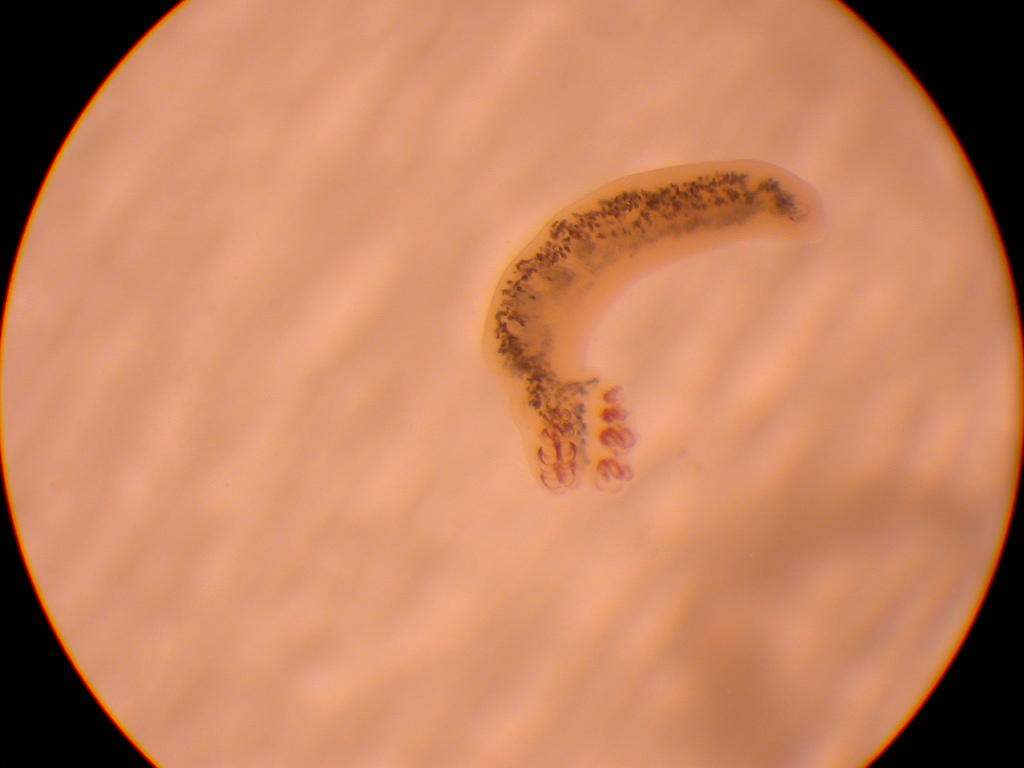
how/what do monogeneans eat?
may produce enzymes that digest the host tissues, or they may simply graze on surface mucus and skin particles.
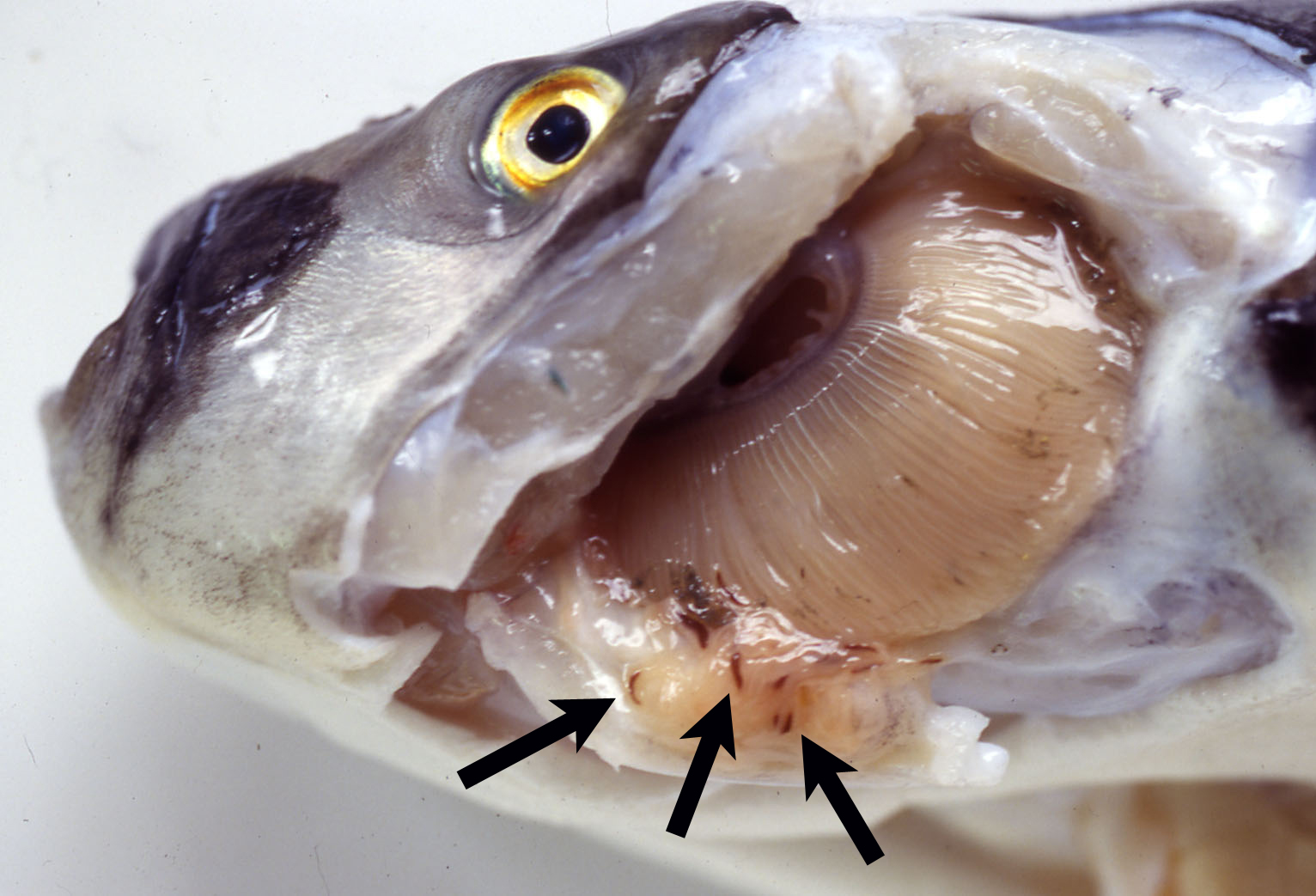
what are some reproductive features of monogeneans?
Most monogeneans are hermaphroditic, but the male gametes develop first and so cross-fertilization is quite common.
what are trematodes?
aka flukes, internal parasites
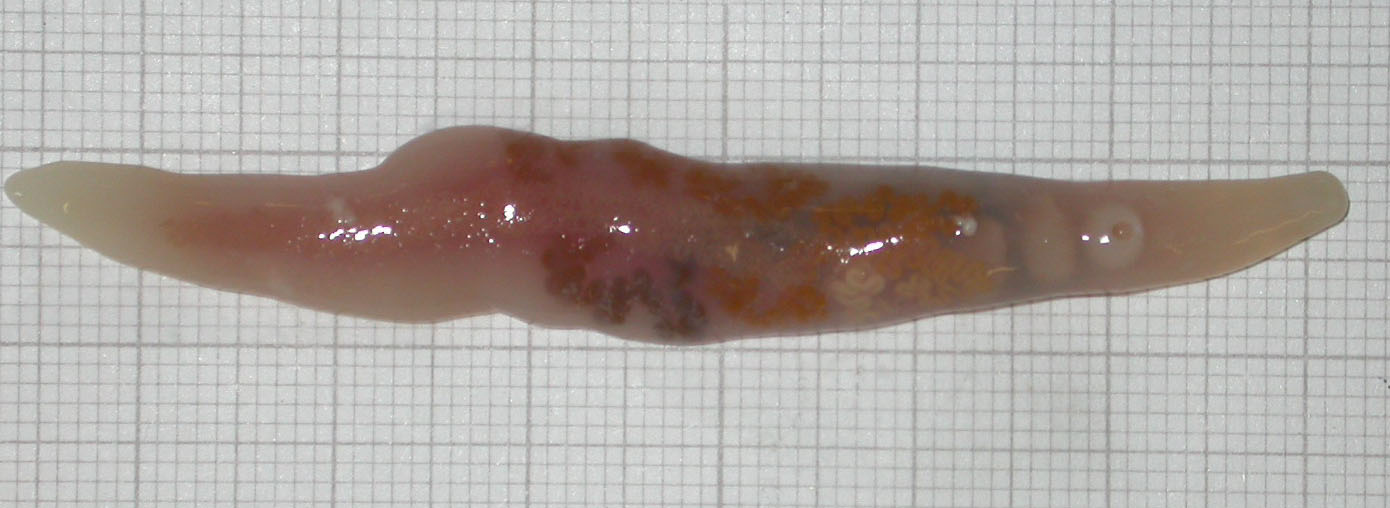
what is a feture of the sexual reproduction of trematodes?
involves a primary host, usually a vertebra, in which sexual reproduction occurs, and one or more secondary hosts, usually a mollusk, in which asexual reproduction occurs.
what is the disease that is caused by trematodes in humans?
schistosomiasis
what are cestodes?
aka tapeworms. internal parasites, mainly of vertebrates
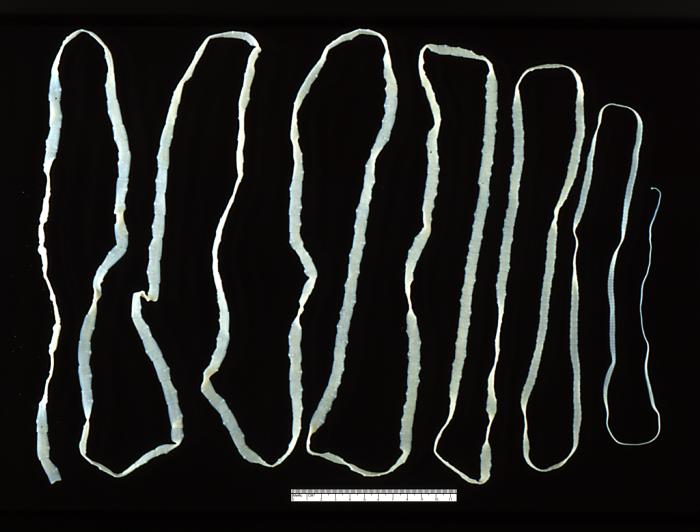
what is a characteristic of tapeworms?
scolex, proglottids
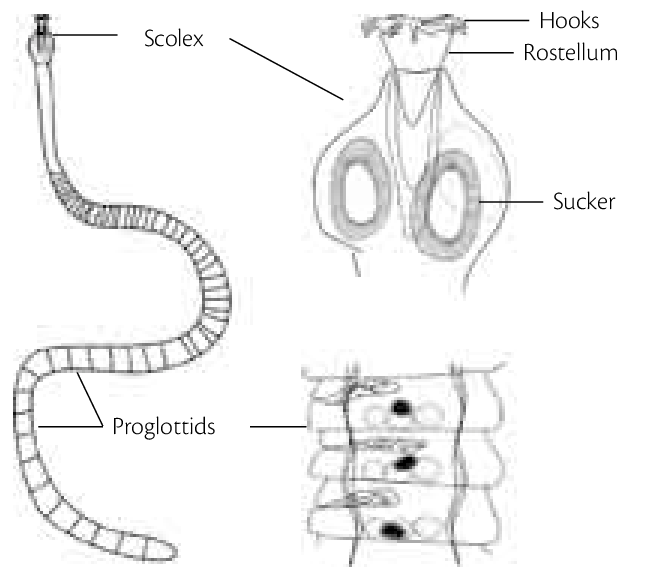
do tapeworms possess a digestive system?
no, they absorb nutrients from the food matter surrounding them in the host’s intestine by diffusion
where do cestodes live?
in the intestinal track of the host, remaining fixed using hooks on their anterior end (scolex)
how do cestodes reproduce?
cross-fertilization between different worms in the same host, but may also occur between proglottids
what is the phylum nemertea?
ribbon/proboscis worms. they are marine and mostly bentic/bottom dwellers
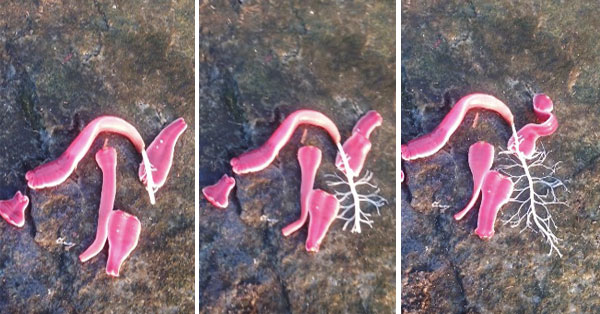
what kind of symmetry do the nemertea possess?
bilateral symmetry
what is the morphology of nemertea?
various sizing, contractile properties, soft and unsegmented
what is a charachteristic of nemertea?
presence of an eversible proboscis enclosed in a pocket called a rhynchocoel. this proboscis is used for food capture, some species are ornamented with barbs
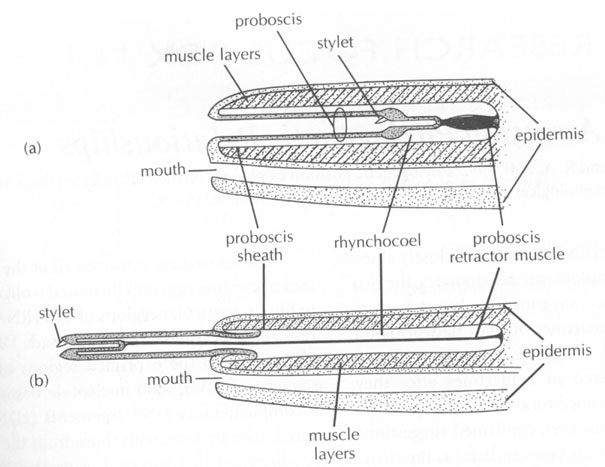
what is a rhynchocoel?
a fluid-filled cavity that extends from the head to nearly two-thirds of the length of the gut in these animals
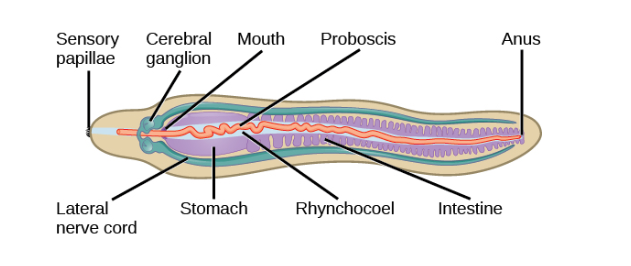
what kind of digestive system do nemertea possess?
complete digestive system
what kind of Coel do Nemertea have?
coelomic
describe the circulatory system of the nemertea
closed circulatory system, consists of a closed loop formed by a connected pair of lateral blood vessels. Some species may also have a dorsal vessel or cross-connecting vessels in addition to lateral ones.
how is gaseous exchange occurring in nemerteans?
through the skin
how is osmoregulation carried out in nemerteans?
a pair of excretory tubes called protonephridia
what makes up the nemertean nervous system?
four ganglia, paired longitudinal nerve cords, pair of ocelli/eyespots
interestingly, what can be found in the nemertean brain?
hemoglobin, which is used as an oxygen reserve
what different modes of reproduction are there for nemerteans?
regeneration, fragmentation
what kind of mating is seen in phylum nemertea?
courtship spawning; they are mostly dioecious
some nemertea larvae are…
trochophore-like (a young worm is constructed from a series of imaginal discs that begin as invaginations from the body surface of the larva)
super phylum lophotrochozoa common traits
feeding apparaturs (cilia around mouth), trochophore larvae (two bands of cilia around mouth), bilateral, triploblastic, protostome, simple cephalization, hox genes
superphylum ecdysozoa consists of?
nematoda and arthropoda
what is the main charachteristic of superphylum ecdysozoa
a cuticle- a tough but flexible exoskeleton that protects the animal from water loss/predators/other external dangers
who has a special resistance to desiccation in superphylum ecdysozoa?
tardigrada
what is the molting process, and is it exclusive to just one phylum?
it is exclusive to superphylum ecdysozoa
what is the name of the process of molting?
ecdysis, the actual shedding of the old exoskeleton. old cuticle is replaced with new cuticle, which is secreted beneath it and will last until next growth period
what is the tissue plan of phylum nematoda?
triploblastic pseudocoelomates
what is the body plan of phylum nematoda?
bilaterally symmetrical
what is the morphology of phylum nematoda
tubular
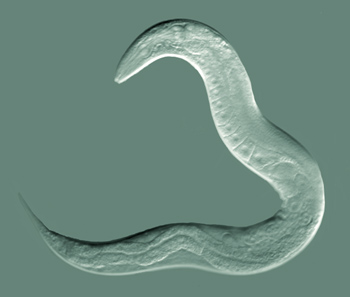
what kind of digestive system do phylum nematodes have
complete digestive system with a distinct mouth and anus
what makes up a nematodes cuticle?
collagen and chitin- the chitin extends into both ends of the digestive tract, the pharynx, and rectum.
what makes up the epidermis of phylum nematoda
single layer of cells or a syncytium; multinucleated tissue, in this case formed by the fusion of many single cells
describe the nematode head morphology
In the head, an anterior mouth opening is composed of three or six “lips” as well as teeth derived from the cuticle (in some species)
what are some cuticle modifications in some nematodes
rings, head shields, or warts
do nematodes show true segmentation with their external rings?
no, however they do reflect true internal body segmentation
describe the muscle morphology of nematodes
longitudinal, with direct attachment to dorsal and ventral nerve cords, creating a strong muscular contraction
describe the excretory system of phylum nematoda
not well developed; uses diffusion to release ammonia. osmoregulation are performed by simple excretory cells/glands
marine nematodes have what kind of excretory cells
renette cells, which are unique to nematodes.
describe the nervous system of nematodes
four longitudinal nerve cords that run along the length of the body in dorsal, ventral, and lateral positions, fusing at the anterior end to form a pharyngeal nerve ring around the pharynx
describe nematode reproduction
ranges from monoecious to dioecious to parthenogenetic
what do copulatory spicles assist with in anatomical male nematoda
keep him in place and open the vulva of the female into which the amoeboid sperm travel into the spermatheca.
describe the nematode embryonic stage
released from the vulva during the gastrulation, lasts for 14 hours, development continues through four successive larval stages with molting and ecdysis taking place between each stage
what kind of parasitism do parastic nematodes possess
endoparasitism
how is the parasite Dracunculus medinensis (guinea worms) ingested
unfilitered water contatining crusteceans
what/who do hookworms infect
infests the intestines and feeds on the blood of mammals
how are trichnia worms ingested
from the consumption of undercooked pork
how does the nematode ascaris feed on its host
steals nutrition from its human host and may create physical blockage of the intestines
how are filarial worms ingested
commonly vectored by mosquitoes, which pass the infective agents among mammals through their blood-sucking activity
how do Wuchereria bancrofti affect their hosts
infects the lymph nodes, usually producing a non-lethal but deforming condition called elephantiasis
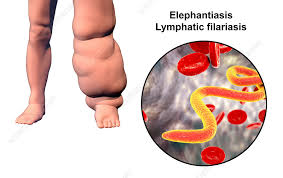
what is a defining charachteristic for phylum tardigrada
a state called cryptobiosis, which provides them with resistance to multiple environmental challenges, including desiccation, very low temperatures, vacuum, high pressure, and radiation.They can suspend their metabolic activity for years, and survive the loss of up to 99% of their water content.
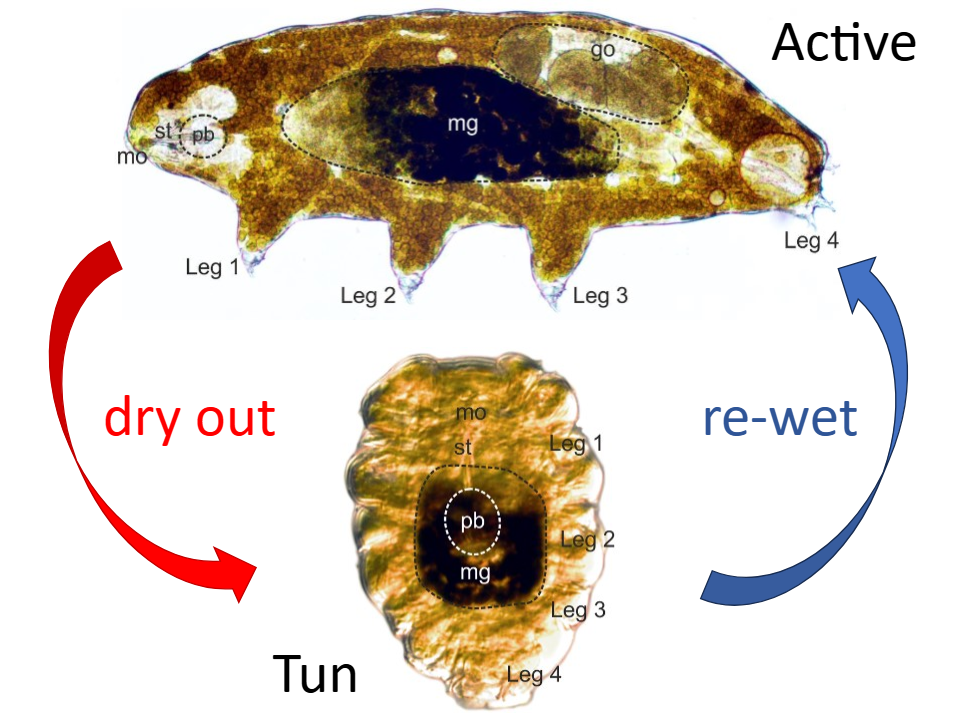
what is attributed to tardigradas cryptobiosis ability
unique proteins that replace water in their cells and protect their internal cell structure and their DNA from damage
what is the morphology of phylum tardigrada
cylindrical bodies, with four pairs of legs terminating in a number of claws. The first three pairs of legs are used for walking, and the posterior pair for clinging to the substrate.
what do Tardigrada feed on how do they feed
Tardigrades feed on plants, algae, or small animals. Plant cells are pierced with a chitinous stylet and the cellular contents are then sucked into the gut by the muscular pharynx
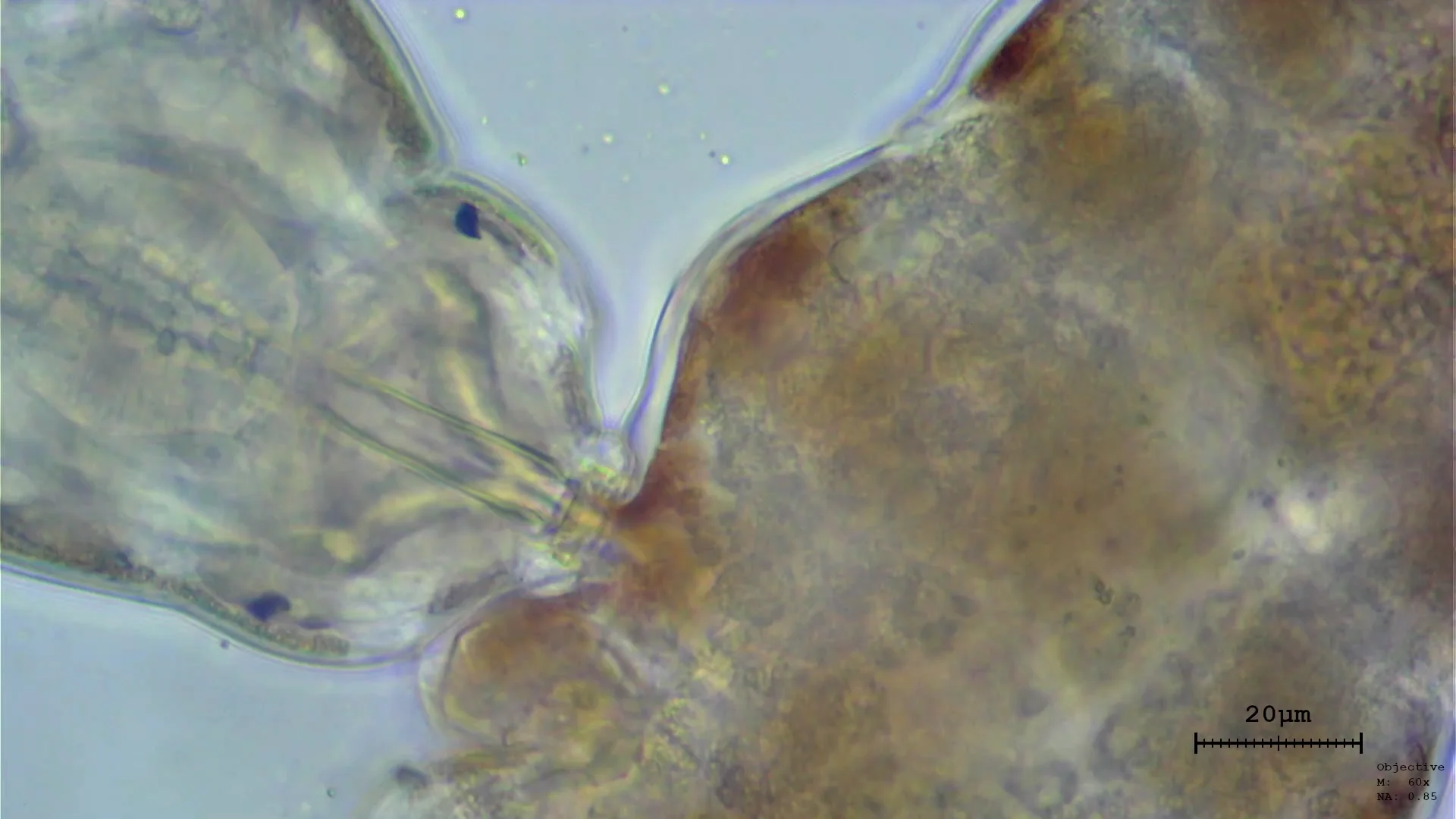
what is the body cavity of the tardigrada
a hemocoel; there are no specialized circulatory or respiratory structures
how do tardigrada locomote?
a pair of simple eyespots on the head, and sensory cilia or bristles concentrated toward the head end of the animal
how is metabolic waste removed in phylum tardigrada
Malpighian tubules in the hemocoel remove metabolic wastes and transport them to the gut
how do tardigrada move, morphology wise
Bands of single muscle cells are attached to the various points of the epidermis and extend into the legs to provide ambulatory movement
describe the mouth morphology of tardigrada
A circular mouth leads to a muscular pharynx and salivary glands
describe the reproduction cycle of tardigrada
mating occurs occasionally at the time of molting, fertilization is external. eggs are deposited in a molted cuticle/attached to other objects.
how do tardigrada grow
development produces a fixed number of cells, with the actual number of cells being dependent on the species. Further growth occurs by enlarging the cells, not by multiplying them.